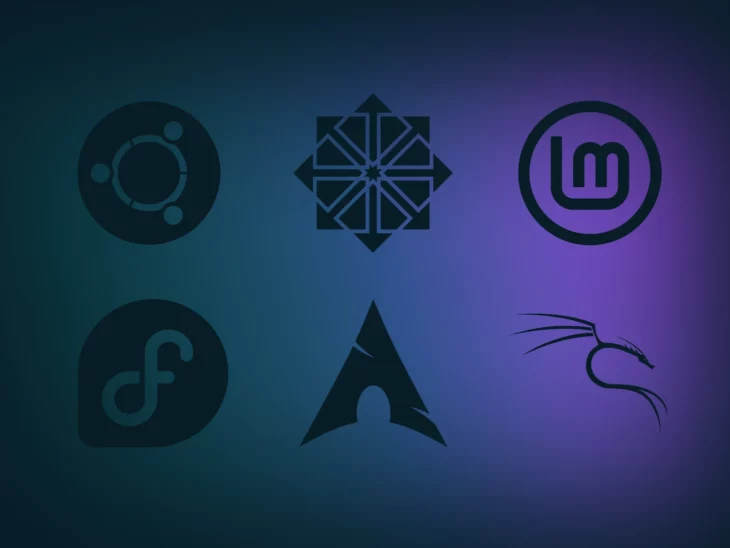Ever get confused when picking an ice cream flavor? Linux distributions are similar — they offer a range of choices, each with a unique touch.
Ubuntu, Fedora, MX Linux, Linux Mint: these are all Linux distributions. Just like chocolate, vanilla, and strawberry ice cream, each Linux distro offers a different experience, unique tools, and attracts a different crowd.
Linux
Linux refers to a family of open-source operating systems (OS) based on the Linux kernel. There is no single ‘Linux OS.’ Instead, it forms the core called ‘distros’, offer different user experiences.
Read MoreNow, you may be thinking, “Linux? Isn’t that just for tech wizards with long beards?”
And you’re not off base, considering only 3.77% of all desktop operating systems are Linux-based. However, this number has been consistently growing over the last few years. Currently, 47% of the world’s 500 most powerful supercomputers run Linux, and over 55% of professional developers prefer Linux for the dev workloads because of how easy it is to customize operating systems built around it.
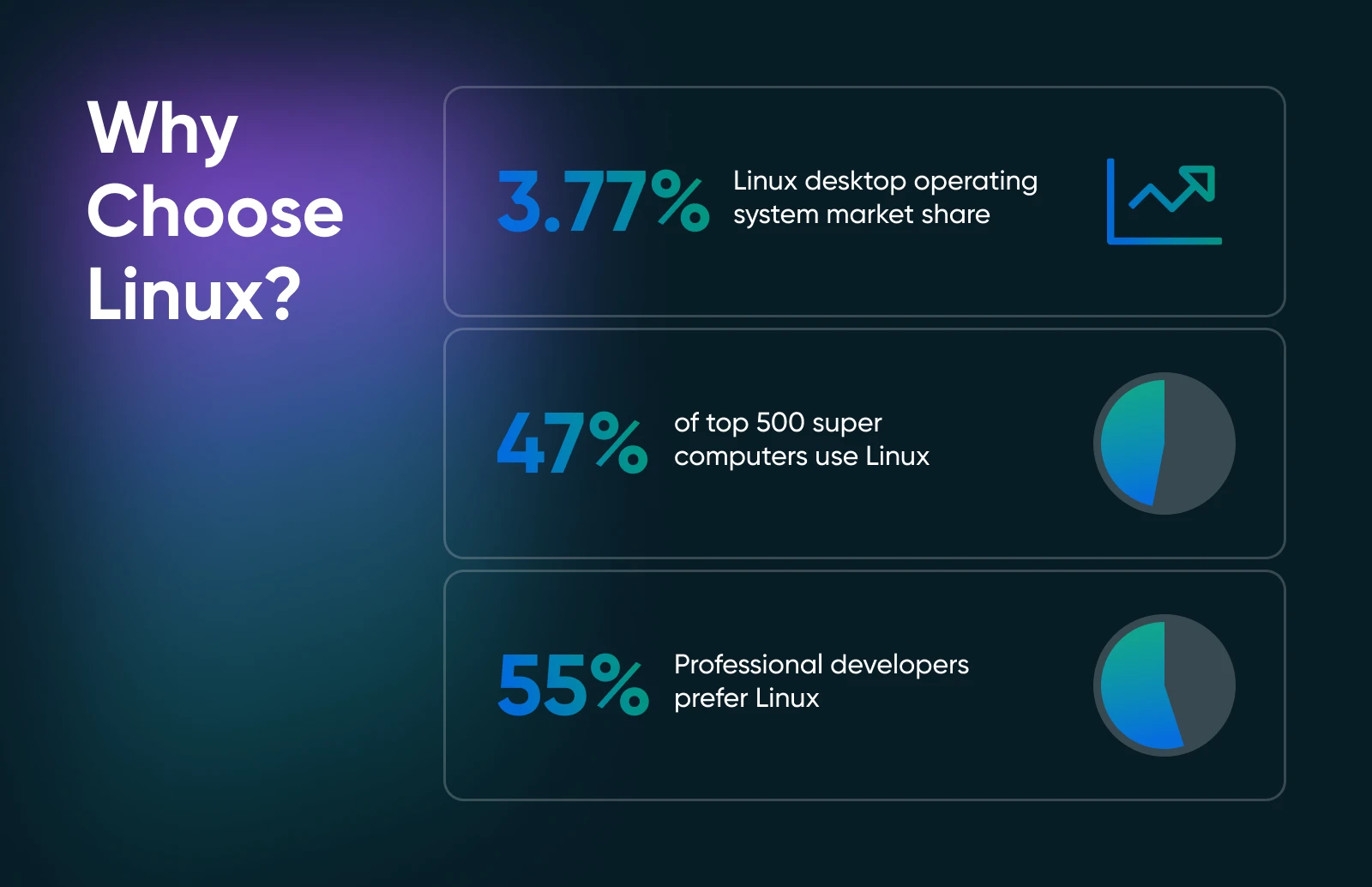
The Linux kernel has also made great strides since its early days, and distros that use it are now as user-friendly as other popular operating systems.
Plenty of distros are easy to use now, even for an absolute beginner.
Because Linux is open source, you’ll always find an existing app or utility to solve any problem you may have.
But, how do you choose the right Linux distro for you? And what should you look for?
How To Choose A Linux Distribution?
Finding the right Linux distribution (distro) can feel challenging, especially if you’re new to open-source operating systems. You’ll find various distros, each with its personality and quirks.
Some distributions are designed to run on extremely old hardware (including toasters!), while modern distributions require higher-end computers with more RAM.
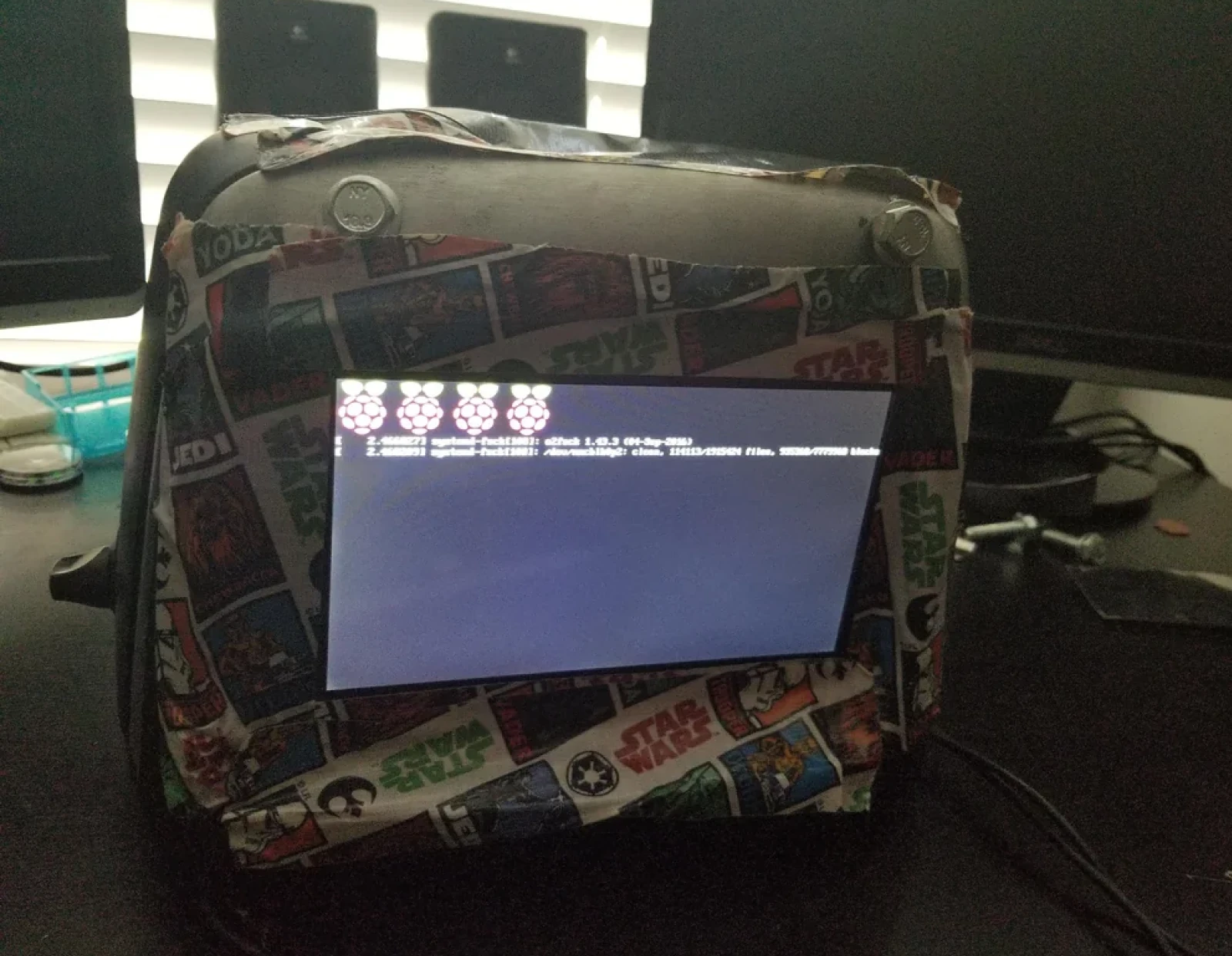
So, before installing an operating system, take some time to consider what you need — and prefer.
Let’s break down some key factors to consider when choosing a Linux distro:
- How tech-savvy are you? Some distros are designed for ease of use, welcoming newcomers with open arms. Others offer incredible power and flexibility but require some technical knowledge to unlock their full potential.
- Will it run on your hardware? Check for compatibility with your computer’s specifications, especially if it’s an older model. A lightweight distro might be the perfect fit for aging hardware.
- What software do you need? While many excellent open-source programs exist, you might rely on specific proprietary software. In this case, determine how well the distro supports tools like WINE or virtual machines.
- Do you enjoy tinkering? The beauty of Linux lies in its customizability. Some distros offer endless tweaking possibilities, from appearance to functionality. Others provide a more streamlined, pre-configured experience.
- How often do you like to update? Do you live on the cutting edge, craving the newest features even if it means occasional instability? Or do you prefer rock-solid stability and long-term support? Your update tolerance will influence your choice.
- Is community support important to you? Since Linux is open source, direct support is rare. However, many distros boast active communities and extensive documentation. In learning the ropes or troubleshooting, this can be invaluable.
- What about security and privacy? Certain distros offer features like built-in drive encryption, robust authentication, and other hardened security measures for users who prioritize these aspects.
Think about these factors, and you’ll find a Linux distro that’s perfect for you.
The good news? Most Linux distributions let you test the waters before you install them. Boot directly from a USB drive and experience the distro firsthand. There’s no need for a permanent installation until you’re confident in your choice.
You can simply download the distro, use a tool like LiLi to make it usable from a USB stick, and then boot your computer directly using the USB. Then again, if that’s not what you want, you could try it on Docker containers without touching your system settings.
Let’s now explore some of the most popular Linux distros.
The 12 Best Linux Distros Of 2024
Now that you know most distributions can be tried on a live USB stick, which ones should you experiment with?
Nerd Note: Many Linux-based distributions will feature proprietary drivers that may require extra setup.
| Linux Distro Name | Best For |
| Ubuntu | Beginners |
| Fedora | Developers |
| Linux Mint | Windows Users |
| Arch Linux | Customizability |
| CentOS | Servers |
| Elementary OS | MacOS Lovers |
| Manjaro | Simplified Arch |
| Kali Linux | Security |
| Gentoo | Performance |
| Puppy Linux | Old Hardware |
| Tails | Privacy |
| Raspbian | Raspberry Pi |
1. Ubuntu: The Most Popular Choice
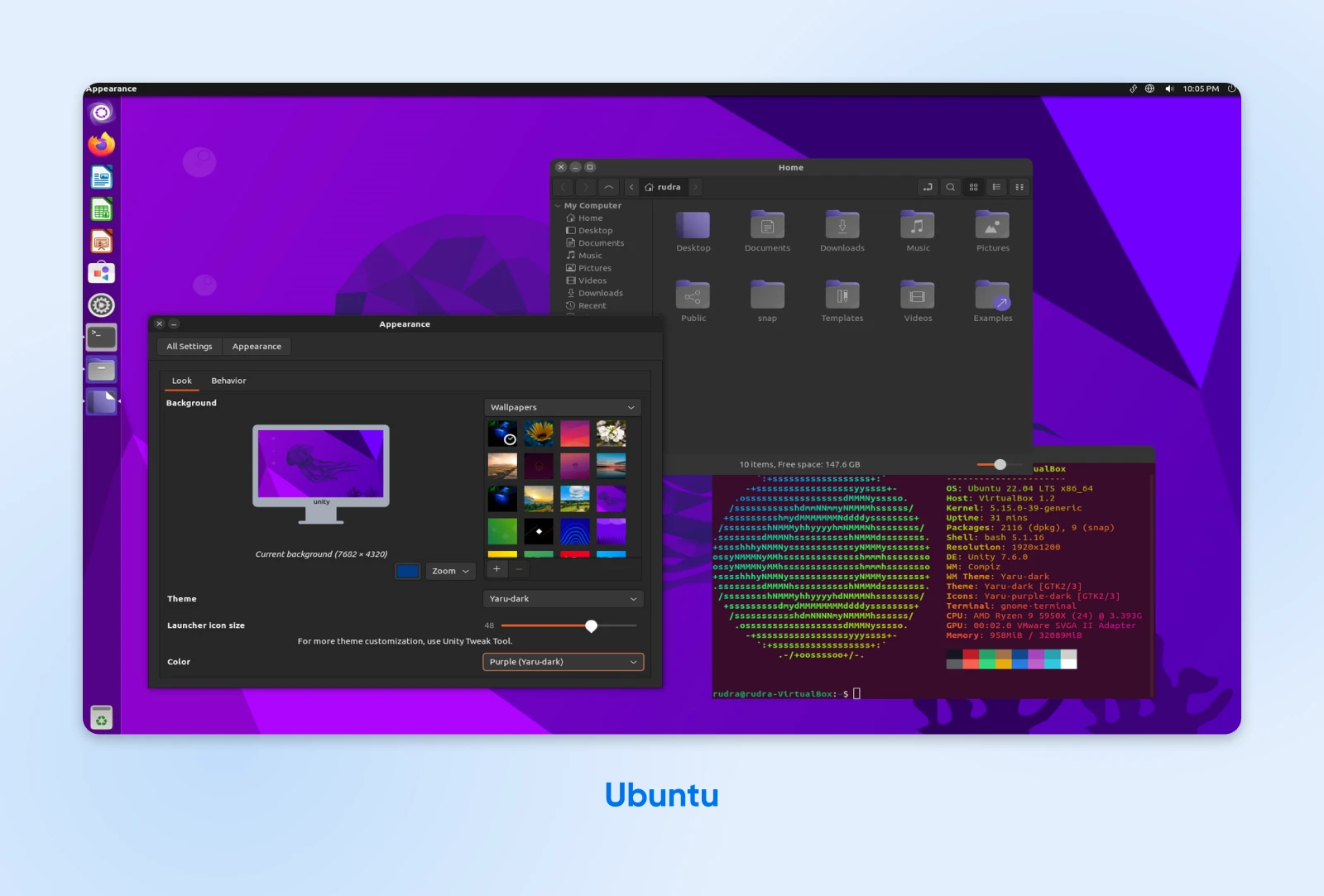
Ubuntu is like the Toyota Camry of Linux distros — reliable, dependable, and perfect for everyday use.
Ubuntu is based on Debian, one of the major distributions often found on virtual private servers (VPS), for its rock-solid stability. However, Ubuntu offers a user-friendly, out-of-the-box experience while giving you the same stability.
VPS Hosting
A Virtual Private Server (VPS) is a virtual platform that stores data. Many web hosts offer VPS hosting plans, which give site owners a dedicated, private space on a shared server.
Read MoreThis distro also comes with a slick desktop environment called GNOME, which looks and feels a lot like macOS or Windows, making it an excellent choice for new Linux users.
Pros:
- Easy to install and use.
- Huge community support.
- Regular updates and long-term support (LTS) releases.
- Tons of pre-installed software.
Cons:
- The GNOME desktop environment may feel a bit sluggish on older hardware.
Bottom Line
If you want ease of use, stability, and a large software ecosystem, its user-friendly interface and extensive community support make it a great starting point for Linux beginners. At the same time, its versatility and regular updates keep it relevant for more experienced users.
If you’re new to Linux or just want something that works out of the box, Ubuntu is a great choice.
2. Fedora: The Cutting Edge
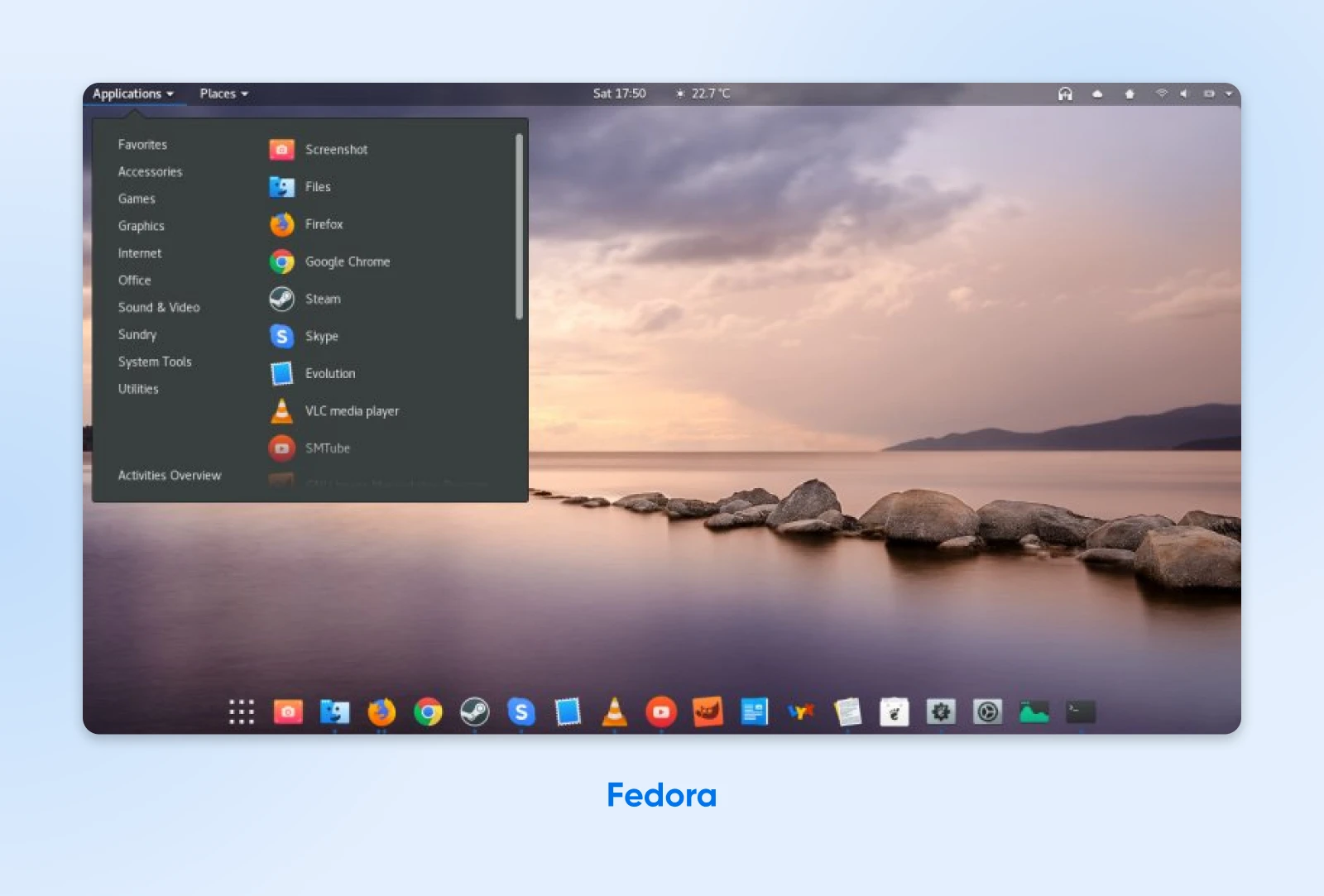
Fedora Workstation is the sports car of Linux distros: fast, sleek, and always on the cutting edge.
It is sponsored by Red Hat, one of the biggest names in enterprise Linux. Fedora, however, is all about innovation and pushing boundaries. If you’re a developer or just love playing with new tech, Fedora is the distro for you.
Pros:
- Always has the latest software versions.
- Focuses on free and open-source software.
- Great for developers and power users.
- Sleek and modern GNOME desktop environment.
Cons:
- A rapid release cycle means frequent updates and potential instability.
- Some proprietary drivers may not be available.
Bottom Line
If you’re a Linux user who values staying up-to-date with the latest software and technologies, Fedora’s focus on innovation and free software principles makes it a favorite among developers and enthusiasts. It may not be the most stable Linux distro for everyday desktop use, but it’s definitely a fun one if you enjoy tinkering with your Linux desktop.
3. Linux Mint: The Windows Lookalike
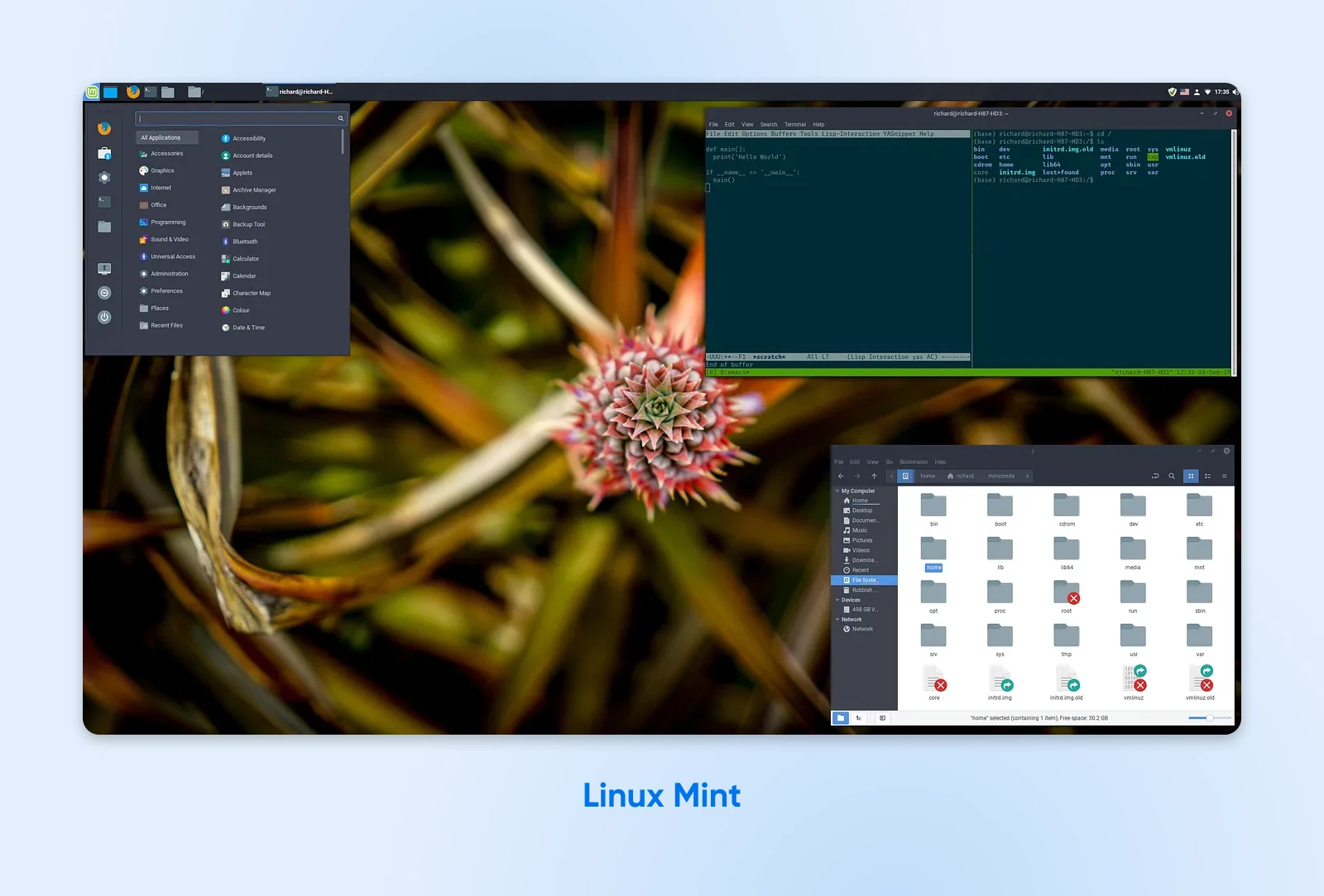
Linux Mint offers a comfortable transition for Windows users who are ready to try Linux.
Based on Ubuntu, this distribution features a familiar desktop environment. It offers a whole host of pre-installed software, including media players, browsers, graphics tools, programming tools, admin tools, music players, and even games — giving you an immersive experience right from the get-go.
Pros:
- Very beginner-friendly.
- Familiar desktop environment for Windows users.
- Comes with lots of pre-installed software and codecs.
- Stable and reliable.
Cons:
- May not have the latest software versions.
- Some advanced features may be hidden or more challenging to access.
- The default Cinnamon desktop environment may be a bit heavy.
Bottom Line
If you’re a Windows native and want to explore Linux, try Linux Mint. Its familiar interface, pre-installed software, and focus on stability make it a great starting point for beginners.
4. Arch Linux: Perfect Distro For Tinkerers
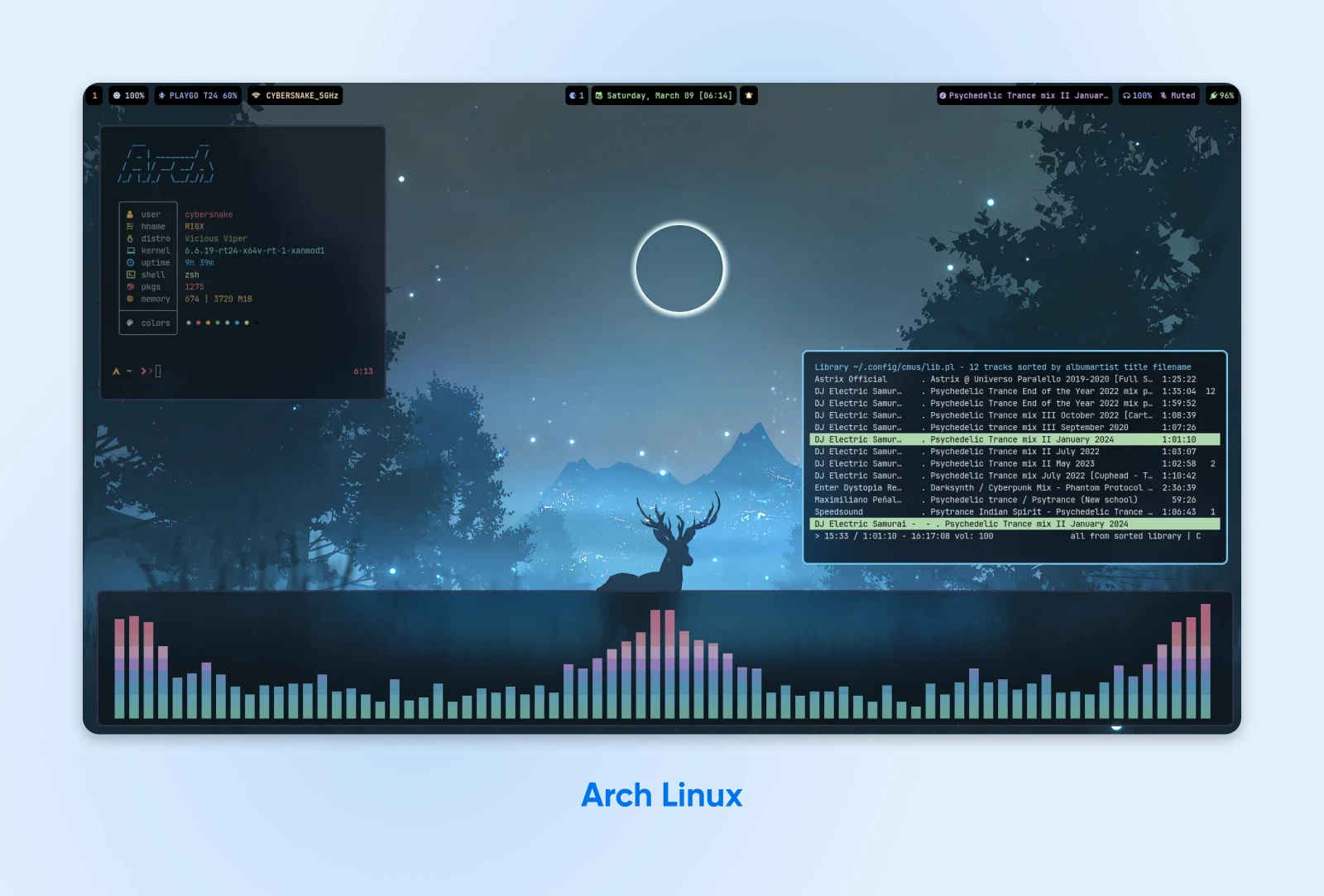
Arch Linux is like a box of Legos. It’s all about building your unique creation.
Arch follows a “keep it simple” philosophy, with just the bare essentials. From there, you can choose every system component, from the desktop environment to the default text editor. You’ll also learn many new Linux commands while getting your Arch system up and running.
Pros:
- Extremely customizable and allows you to build your very own Linux-based operating system from the ground up.
- Always has the latest software versions.
- Great for learning about Linux internals.
- Excellent documentation and community support.
Cons:
- A steep learning curve for beginners.
- Requires a lot of manual setup and configuration.
- It may not be as stable as other Linux distros.
Bottom Line
Arch Linux is for users who love to play around and want complete control over their system. It offers unparalleled customization options and access to the latest software but requires significant time and effort to set up and maintain. Their extensive documentation is a well of knowledge any Linux user can appreciate.
If you love to tinker, Arch Linux is the blank canvas you want!
5. CentOS: The Server Powerhouse
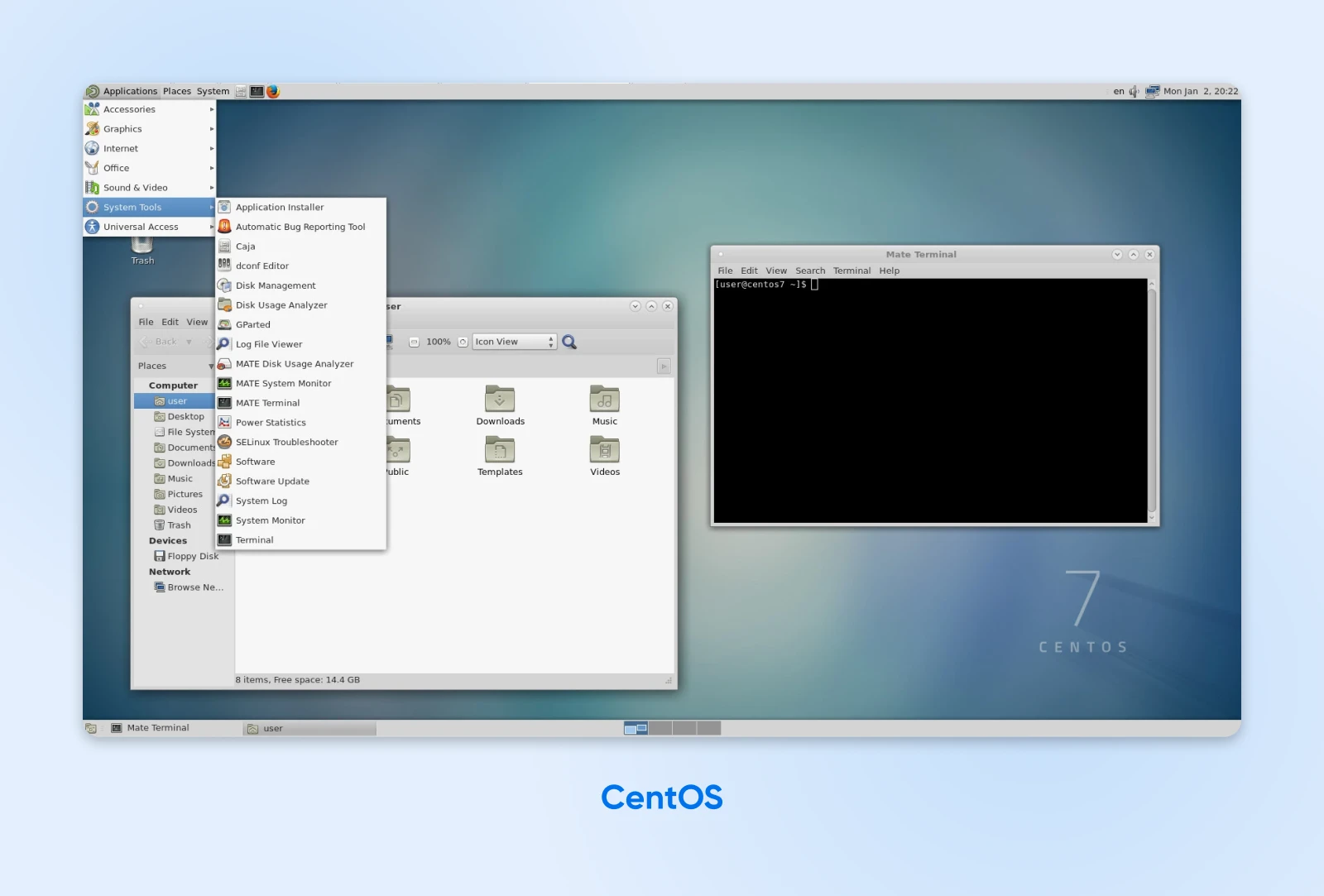
Think of CentOS as the pickup truck of Linux distros. It’s rugged, reliable, and built for heavy lifting.
CentOS is based on Red Hat Enterprise Linux (RHEL). Still, it strips out the proprietary bits and provides a free, community-supported server distro perfect for web hosting, file sharing, and other server tasks.
12.4% of the world’s leading supercomputers use CentOS, which says a lot about the trust people put into this distro’s stability and reliability.
Pros:
- Rock-solid stability.
- Excellent security features.
- Ideal for servers and enterprise use.
- Long-term support (up to 10 years).
Cons:
- Not natively intended for desktop use.
- May not have the latest software versions.
- Requires some technical knowledge to set up and maintain.
Bottom Line
CentOS is a stable, secure, and reliable Linux distribution for their servers. Its long-term support and compatibility with RHEL make it a favorite among enterprises and hosting providers.
If you need a dependable workhorse for your server, CentOS is the distro for you. It’s dependable, durable, and a distro that’s ready to disco.
6. Elementary OS: The Perfect MacOS Replacement For Laptops
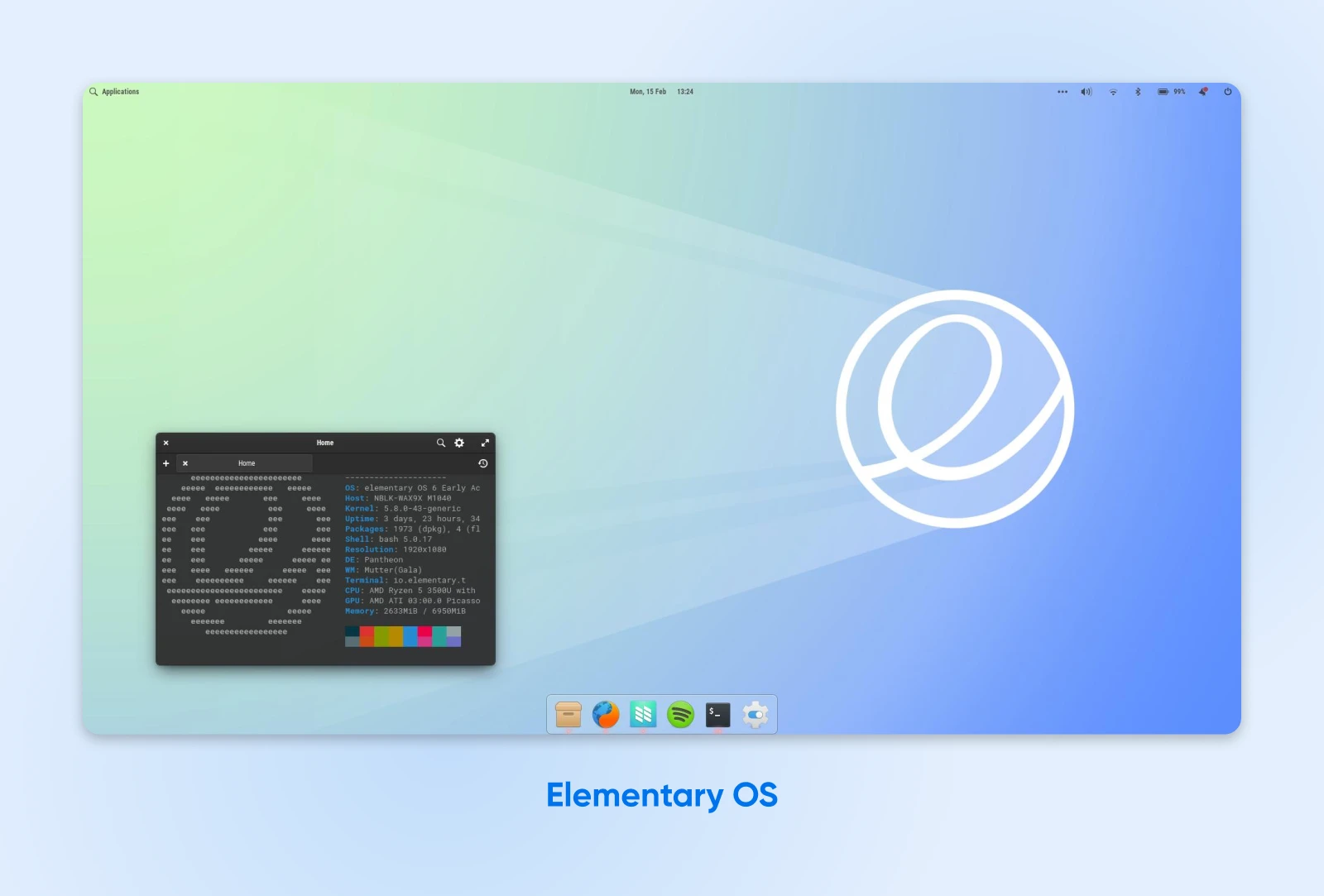
Elementary OS is arguably the most beautiful-looking distro on the market.
It’s designed to look and feel much like macOS, focusing on simplicity and aesthetics. Elementary comes with custom apps for tasks like email, calendar, and music playback, all designed to match the overall look and feel of the OS.
Pros:
- Beautiful, polished desktop environment.
- Consistent design language across the OS and apps.
- Focuses on simplicity and ease of use.
- Great for macOS users who want to try Linux.
Cons:
- Limited customization options.
- The design language is maintained only by the limited apps in its AppCenter.
Bottom Line
Elementary OS is built for users who value simplicity, elegance, and a consistent user experience. Its beautiful desktop environment and custom-built apps make it a great option for design-conscious users and beginners.
If you’re a fan of macOS’s design sensibilities and want a Linux distro that looks like it belongs in an art gallery, Elementary OS is your soulmate.
7. Manjaro: The Arch Linux With Training Wheels
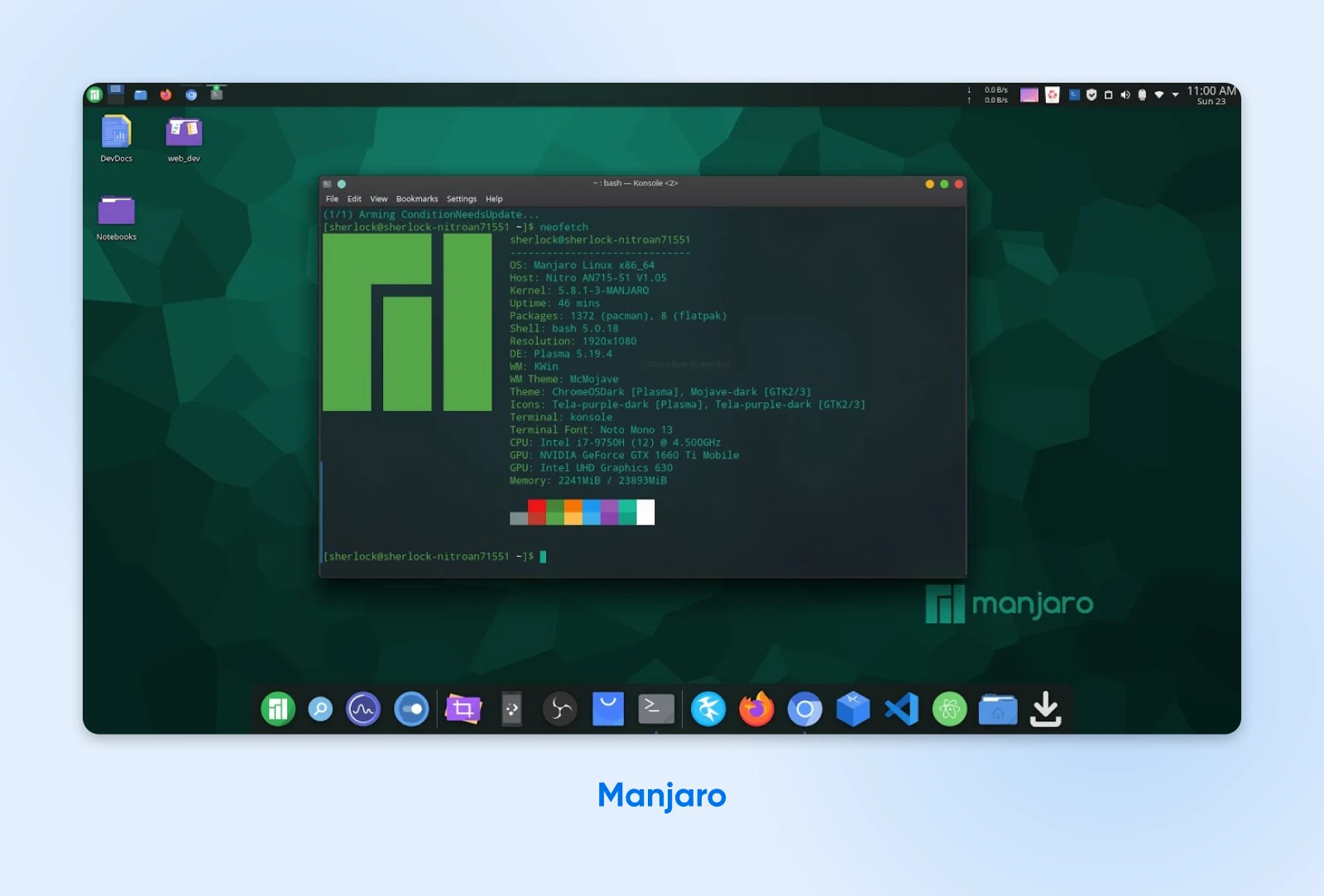
Manjaro is based on Arch Linux. Basically, it’s a less intimidating version of Arch. The power and flexibility of Arch are combined with a friendly pre-built interface.
Manjaro comes with a graphical installer, pre-installed desktop environments, and software repositories with more stable versions of packages. It’s a great way to get your feet wet with Arch-based Linux distros without diving into the deep end.
Pros:
- More user-friendly than pure Arch Linux.
- Access to the Arch User Repository (AUR) for tons of additional software.
- Multiple desktop environments to choose from.
- Good balance of stability and cutting-edge software.
Cons:
- Still requires some technical knowledge to use effectively.
- Not as stable as distros like Ubuntu or Mint.
Bottom Line
If you’re intrigued by Arch Linux but intimidated by its complexity, Manjaro will help you build your confidence and skills until you’re ready to set up Arch from scratch.
8. Kali Linux: The Hacker’s Toolkit
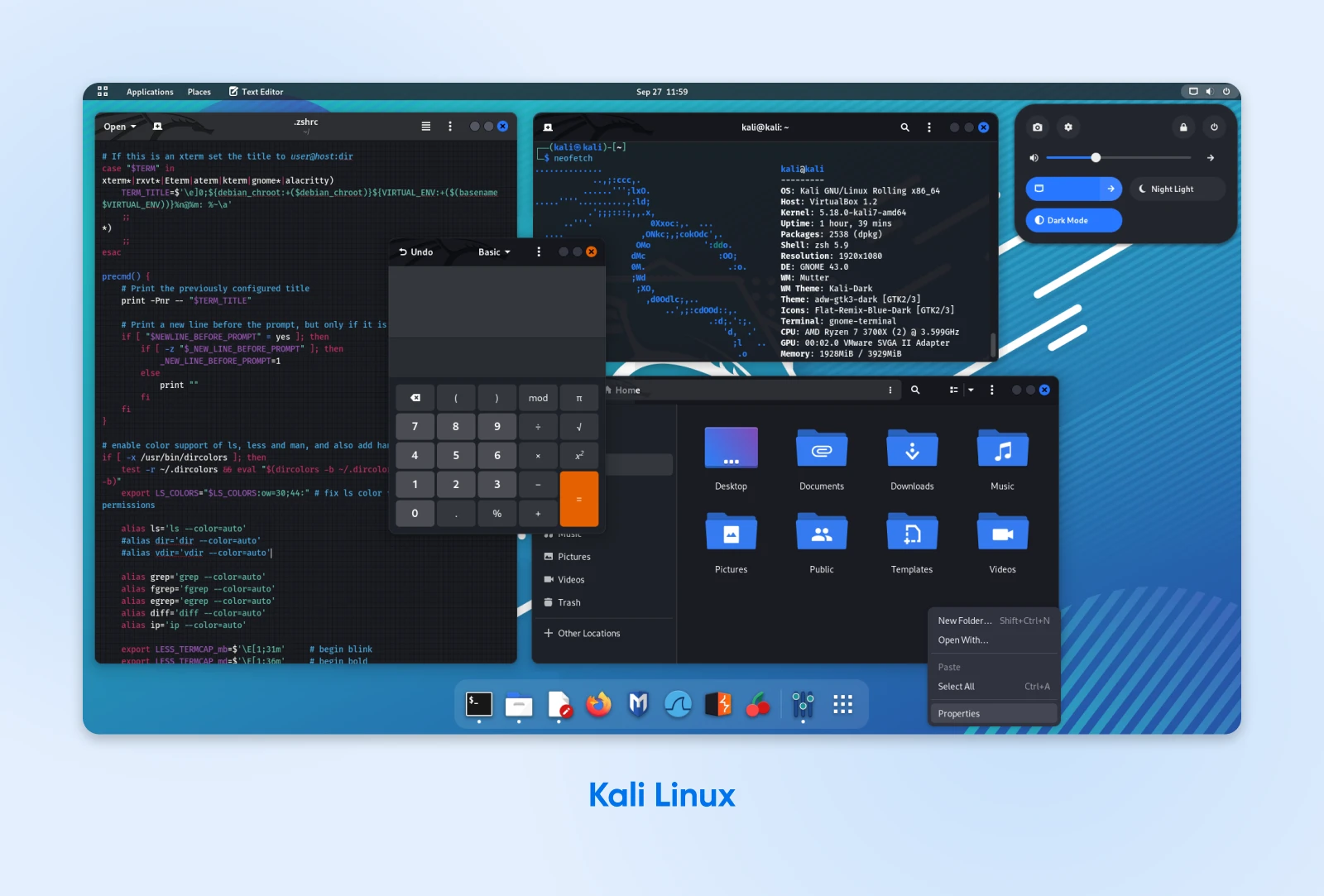
Kali Linux is a complete utility belt: packed with tools for penetration testing, security auditing, and digital forensics.
It’s based on Debian, but focused on security and privacy. It’s mainly designed to run on a live USB stick so you can work (a.k.a. do security testing) without leaving any traces. You can pick a default desktop environment, including KDE Plasma, Gnome, XFCE, and more.
Pros:
- Ideal for security professionals and enthusiasts.
- Comes with a vast array of security and hacking tools.
- It can be run in “live” mode from a USB drive for portability.
- Focuses on privacy and anonymity.
Cons:
- Not designed for general desktop use.
- May be overwhelming for beginners.
Bottom Line
Kali Linux is created for security professionals, penetration testers, and enthusiasts who need a comprehensive toolkit for assessing and securing networks and systems. If you’re a security pro or just love to fiddle with network security, Kali Linux is your trusty sidekick — always ready with the right tool for the job.
9. Gentoo: The DIY Champion
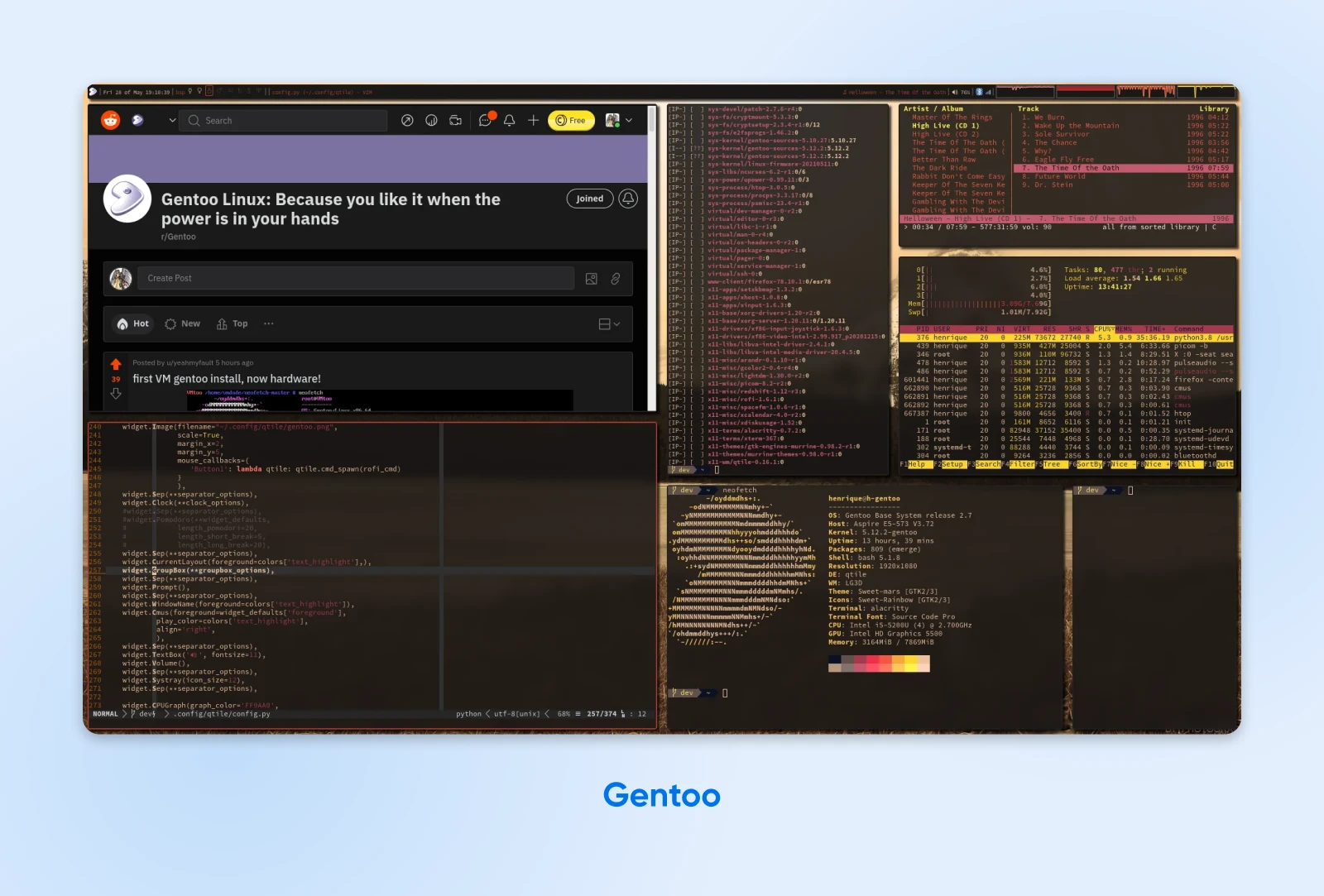
Gentoo is like building a computer yourself – from scratch. This type of customization isn’t for the faint of heart, but the end result is a system that’s perfectly tailored to your needs.
Gentoo is all about customization and optimization. Its unique package management system compiles everything from source code.
Pros:
- Extremely customizable.
- Provides a deep understanding of the Linux system, including you in compiling and configuring everything, setting up environment variables, and more.
- Excellent documentation and community support.
Cons:
- Steep learning curve, even for experienced Linux users.
- Installation and setup can take a very long time.
- Absolutely not for users who want a quick and easy setup process or those who are new to Linux.
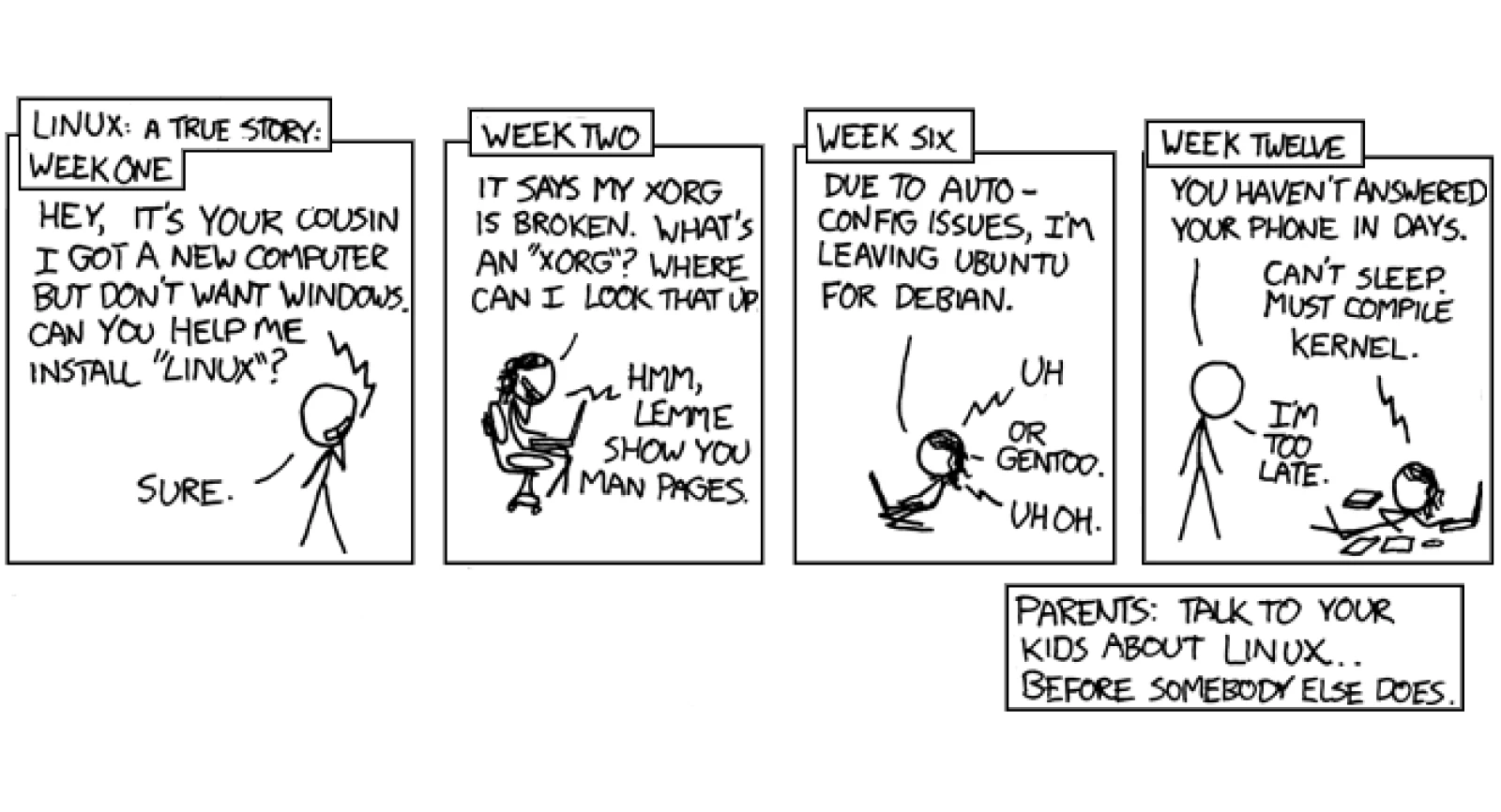
Bottom Line
Although, if you love tinkering, you may find yourself hooked to Gentoo, losing sleep over compiling packages and the kernel to get to the latest version or adding some custom features.
We’ve warned you.
10. Puppy Linux: Perfect For Older Laptops
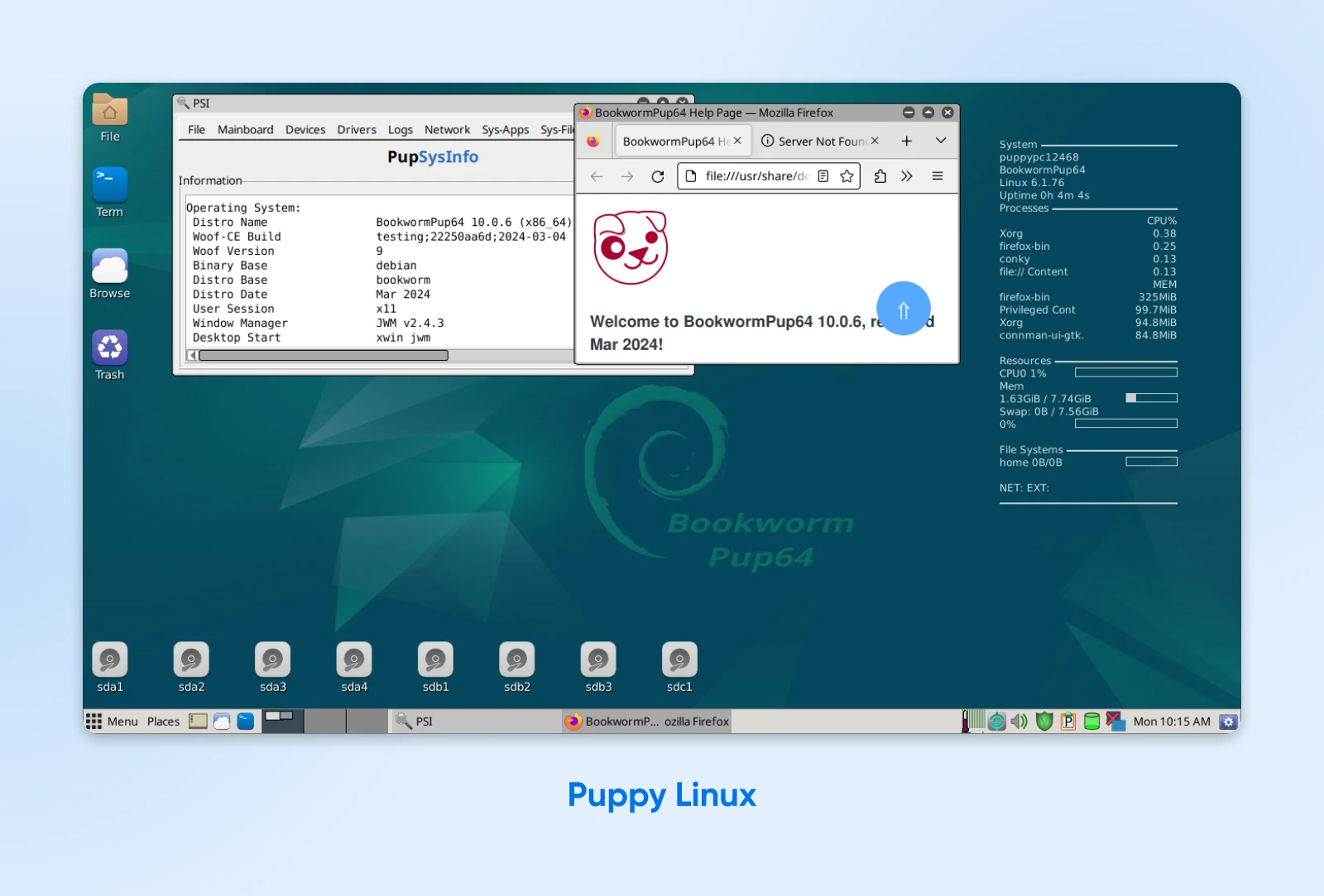
Puppy Linux, true to its name, is tiny, easy to use, and extremely fast.
Designed to be incredibly lightweight and portable, Puppy Linux can run entirely from a USB drive or even a CD-ROM. Despite its small size, Puppy comes pre-loaded with a lot of software and can breathe new life into old, underpowered hardware.
Pros:
- Incredibly lightweight and fast.
- Can run entirely from a USB drive or CD-ROM.
- Comes with a good selection of pre-installed software.
- Great for reviving old hardware.
Cons:
- Limited software selection compared to larger Linux distros.
- May not be suitable for more demanding tasks or newer hardware.
- Some users may find the interface a bit quirky or dated.
Bottom Line
If you have an ancient laptop gathering dust in your closet or just want a Linux distro you can carry around in your pocket, try Puppy Linux.
11. Tails: The Privacy-First Distro
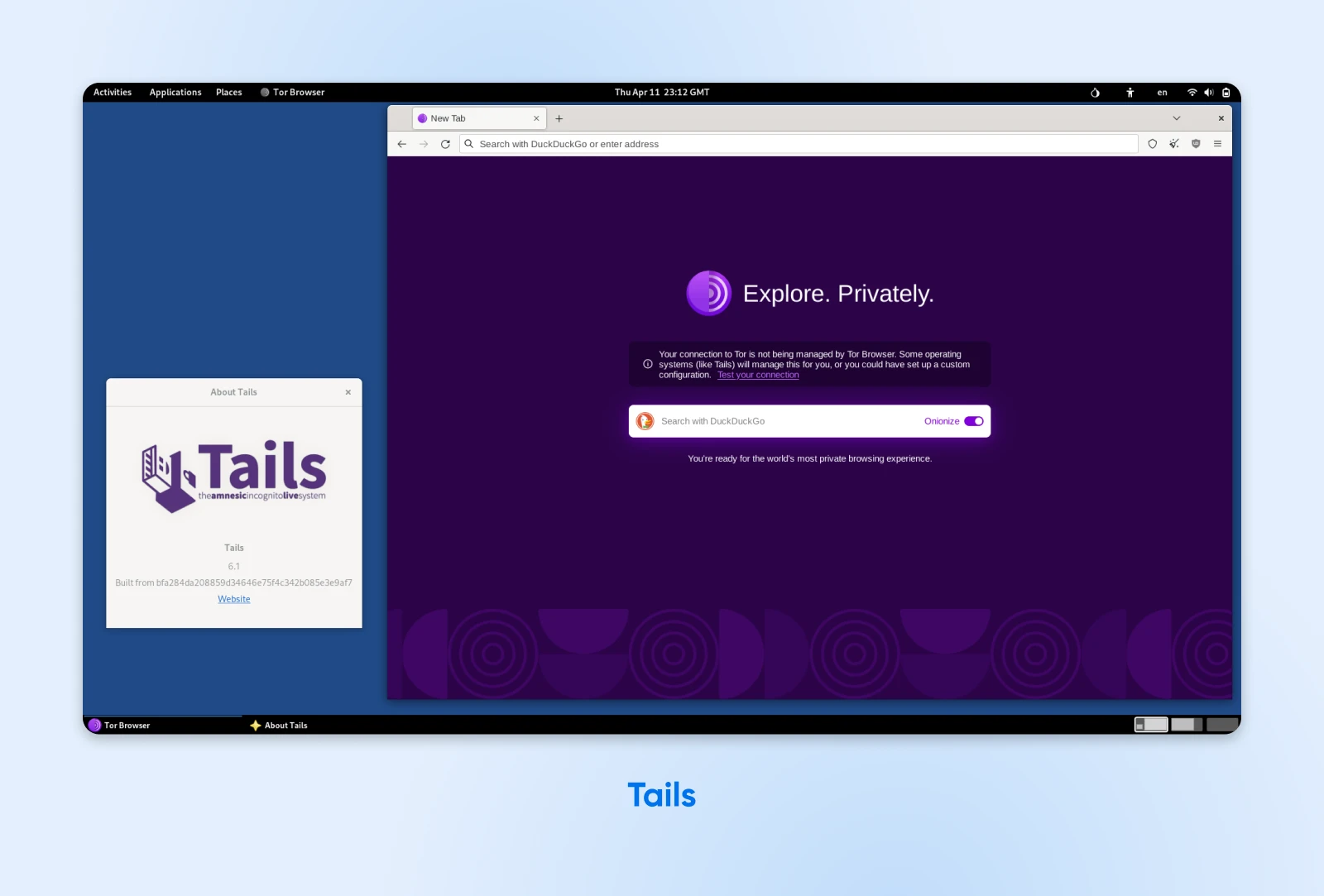
Tails is built to be a digital black box, designed to keep your online activities private and anonymous.
Tails is a live operating system that runs entirely from a USB drive, leaving no trace on your computer. It has built-in encryption tools, secure communication apps, and a web browser configured for maximum privacy.
Pros:
- Excellent privacy and anonymity features.
- Comes with secure communication tools like OnionShare and Tor.
- Can be run from a USB drive for portability.
- Leaves no trace on the computer you’re using.
Cons:
- Limited persistent storage options.
- Some websites may not work properly due to Tor and other privacy features.
- Maybe a bit slow on older hardware.
Bottom Line
If you’re a journalist, activist, or anyone who values online privacy above all else, Tails is your secret weapon. Just remember to keep your USB drive safe and hidden.
12. Raspbian: Perfect Lightweight OS for Raspberry Pi
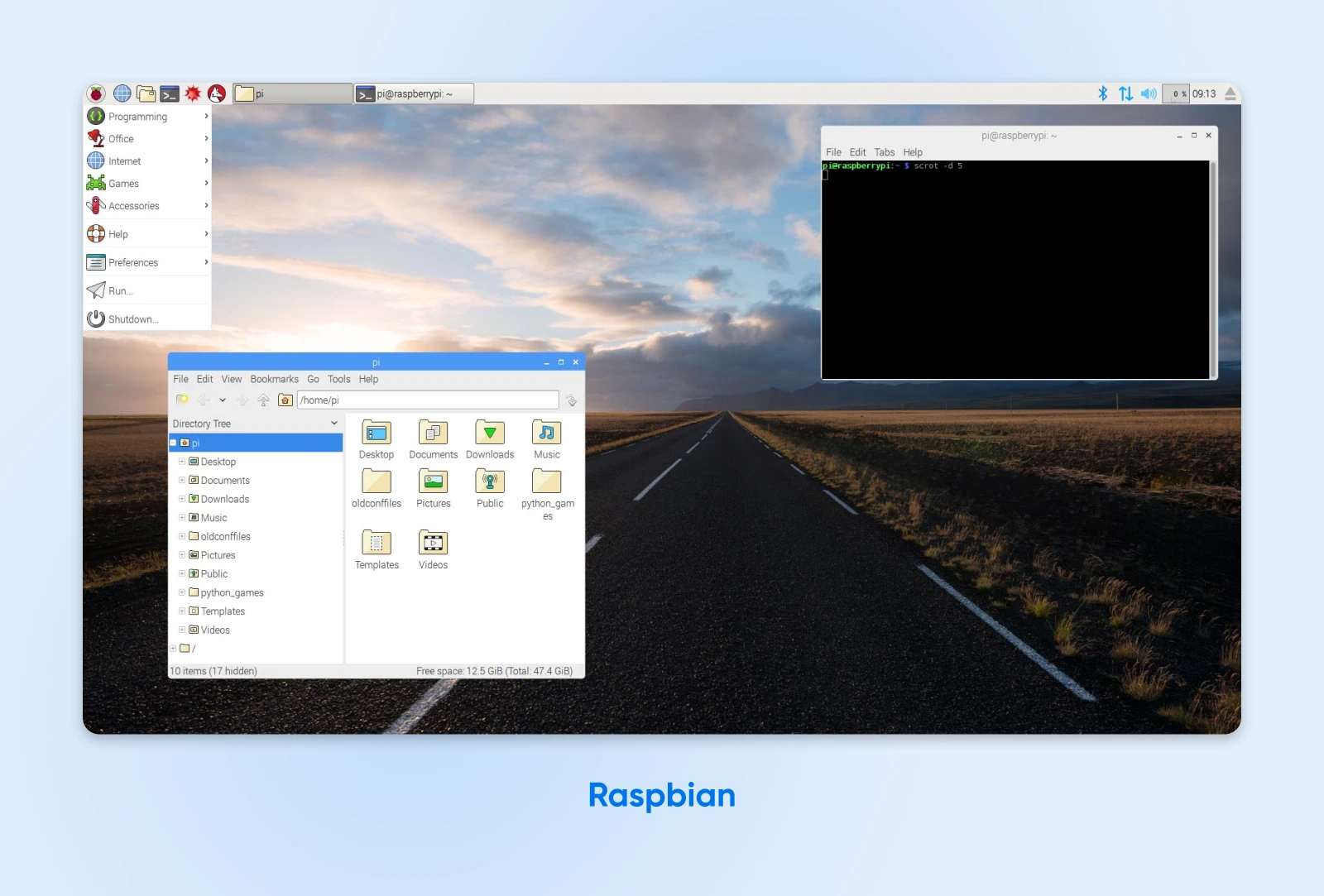
Raspbian and the Raspberry Pi are the perfect dynamic duo. This is the lightest, fully functional Linux distro for your Raspberry Pi projects.
The Debian-based distro is designed to run on the Raspberry Pi, a tiny and affordable single-board computer. It comes with various pre-installed software for education, programming, and general use.
Pros:
- Optimized for the Raspberry Pi hardware.
- Comes with a variety of pre-installed software for education and programming.
- Large community and excellent documentation.
- Great for learning about computers and electronics.
Cons:
- May not be suitable for more demanding tasks or newer hardware.
- Limited software selection compared to larger distros.
- Some users may find the interface a bit basic or outdated.
Bottom Line
If you’ve got a Raspberry Pi and want to explore it fully, look no further than Raspbian. It’s perfectly optimized for the small device and memory availability and works with most hardware that you can connect to a Raspberry Pi.
So, What’s The Best Linux Distro?
Well, that’s like asking, “What’s the best ice cream flavor?” It will always depend on your taste, your needs, and your personality.
If you’re a beginner who just wants something that works out of the box, Ubuntu or Mint might be your jam. If you’re a power user who loves to tinker and customize their work environment, Arch or Gentoo could be your dream. And if you’re a hacker or a privacy advocate, Kali or Tails might be the way to go. Ultimately, the best Linux distro for you is the one that aligns with what you need.
Once you’ve found that perfect fit, why not bring your custom setup to the cloud with ease? At DreamHost, we understand that every customer has unique needs, which is why we offer DreamCompute. Our cloud service is built on OpenStack and gives you the freedom to upload your own Linux images. This means you can spin up your favorite distro – complete with your custom configurations – in a scalable, secure cloud environment.
Just like choosing the best Linux distro, choosing the right cloud service can make all the difference (and who better to trust with your Linux-based cloud needs than a team of fellow Linux enthusiasts?)
Ready to take your Linux journey to new heights? Explore DreamCompute today.

When You Expect Performance Get DreamHost VPS
Big or small, website or application – we have a VPS configuration for you.
See More